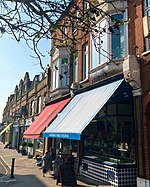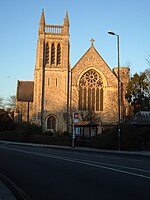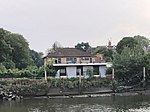Twickenham Studios

Twickenham Studios (formerly known as Twickenham Film Studios) is a film studio in St Margarets, in the London Borough of Richmond upon Thames, that is used by various motion picture and television companies. It was established in 1913 by Ralph Jupp on the site of a former ice rink. At the time of its original construction, it was the largest film studio in the United Kingdom.In February 2012, it was announced that due to the studio going into administration, it would close before June, just a year before its centenary. The studio was subsequently saved from closure, with a new owner acquiring the studio in August 2012.The studios were acquired in February 2020 by The Creative District Improvement Co. with backing from British Airways Pension Fund and TIME + SPACE Studios as operator on a long lease to run the studios.
Excerpt from the Wikipedia article Twickenham Studios (License: CC BY-SA 3.0, Authors, Images).Twickenham Studios
The Barons, London St Margarets (London Borough of Richmond upon Thames)
Geographical coordinates (GPS) Address Nearby Places Show on map
Geographical coordinates (GPS)
| Latitude | Longitude |
|---|---|
| N 51.45566 ° | E -0.31887 ° |
Address
The Barons
The Barons
TW1 2LJ London, St Margarets (London Borough of Richmond upon Thames)
England, United Kingdom
Open on Google Maps









